
Launching you own business can fell overwhelming, but the truth is it doesn’t have to be. With the right tools and mindset, you can start faster and smarter. Read on to learn the 14-steps to starting a business, and how to become an entrepreneur.
Platforms like Shopify are among the most used e-commerce solutions in the USA. It’s trusted by thousands of entrepreneurs for building, managing, and growing online stores easily — even with no technical experience They make it easy to build an online store. Easy business startup, that guides you every step of the way.
Most startups today are build around eCommerce and digital models. By the time you’re done, you’ll understand exactly how to start an eCommerce business or how to start an online business.
We’ll cover Shopify in more detail later, but remember: starting your business online is often easier than it looks. Getting started today is what separates dreamers from others
Why Should i Use Shopify to Start My Business?
If you want to start a business but don’t know where to begin, Shopify gives you the simplest path forward, small business ideas can turn into big businesses. It handles the setup, payments, and design so you can focus on growth, not tech problems. Getting started is what matters most – and Shopify makes it effortless.
Greatness is not in where we stand, but in what direction we are moving.” – Oliver Wendell Holmes
What matters is progress — knowing that you are moving forward in the right direction. The ability to keep moving comes from motivation and discipline.
Ask yourself: “What do I want to achieve?” Maybe it’s a car you’ve always dreamed of. Be specific — what brand and model? Go to a dealership, sit inside it, and let yourself imagine it as yours. That’s not just daydreaming — it’s creating a tangible goal.
Write it down:
“I want a Mercedes S63 in exactly 3 years. This will cost me $186.000 ”
Now, build your path. Start small and scale:
“The first step forward puts you miles ahead of those still thinking.”
Once you’re done reading this article, get started today — make it official. Most people don’t and that’s why they fail on how to become an entrepreneur.
With this simple system, you’ll create momentum. Over time, small steps compound into discipline, and discipline becomes achievement.
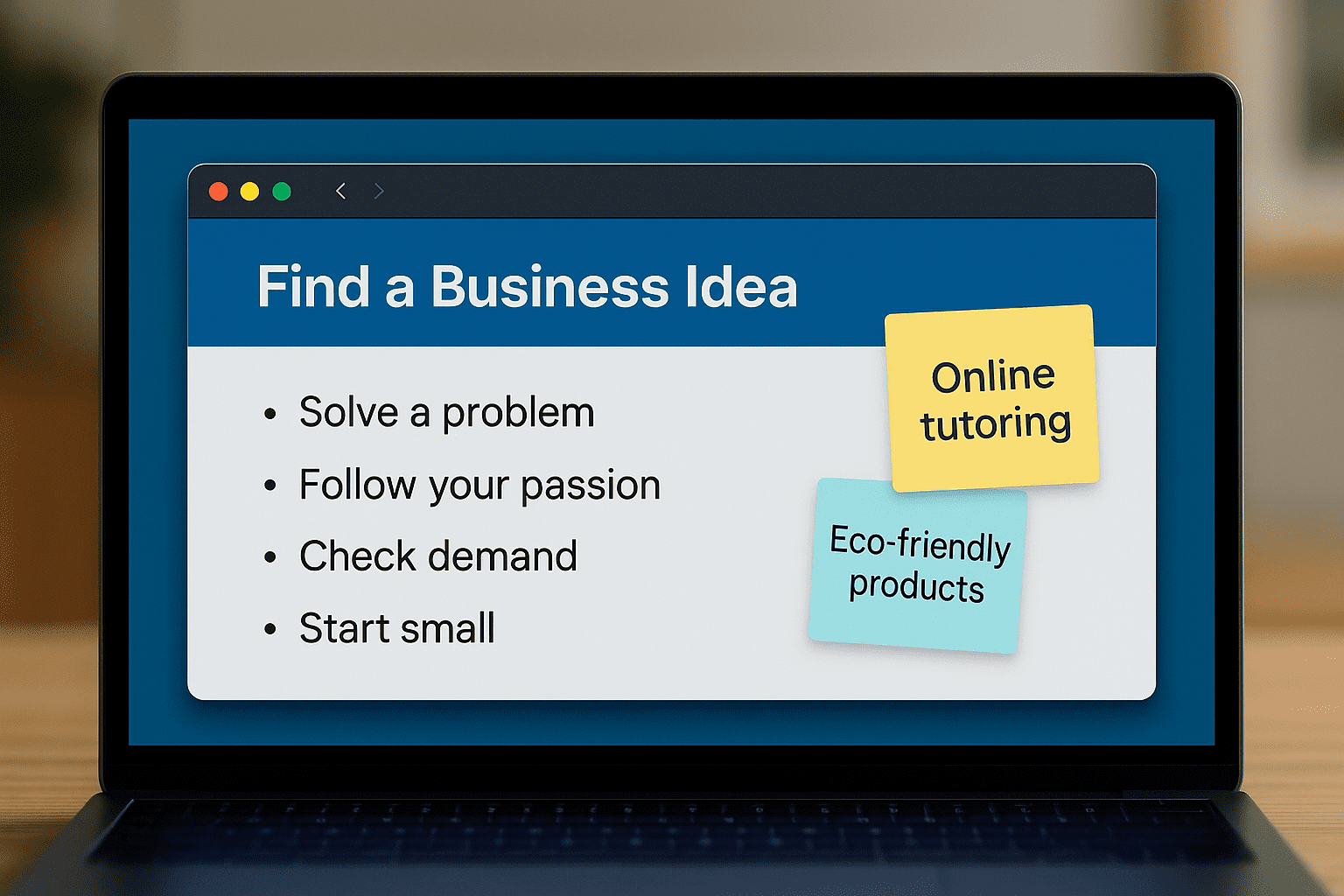
You might think “What is the best business to start? before anything else, you need a clear idea. Many people rush into the first thing they find online, only to waste time, burn out, and get nowhere. And the best business to start is the one you can run consistently, therefore you need to enjoy it! – So af all the steps to starting a business this is the most important.
Instead, look inward to find your niche:
Example:
The truth is: almost any idea can be profitable if you work hard enough. But to last long-term, it has to fit your passion.
Next step: once you’ve chosen your niche, look for improvements. What annoys you about current products or services? Study competitors and ask: “What problem can I solve better?”
Answering this puts you ahead of most people.
Congratulations — you’re already 1% better!
The secret to working hard is to do something you enjoy.
When you love the process, putting in hours feels natural, and consistency becomes your superpower. That’s how progress compounds without burning out.
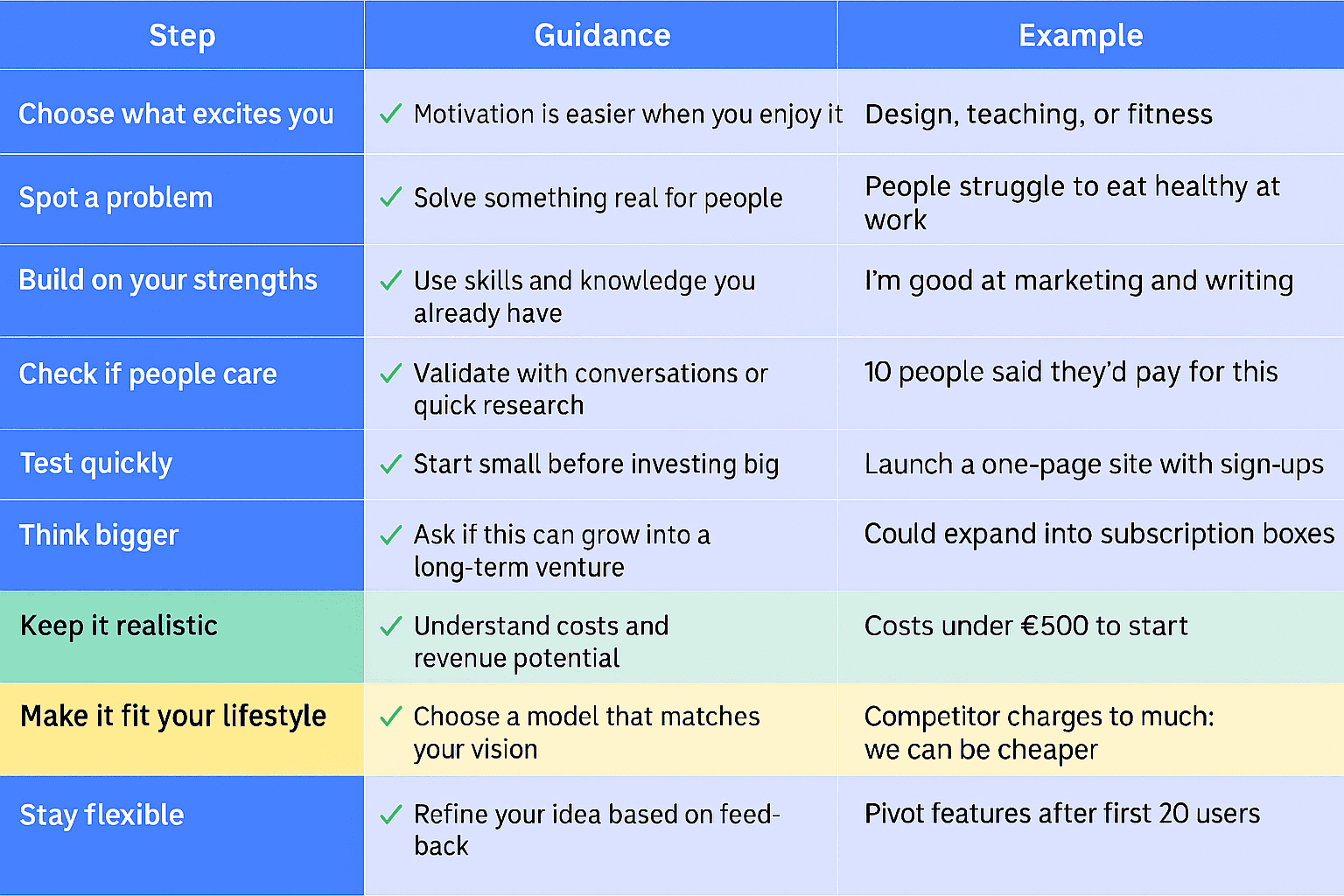
“Ben Cohen and Jerry Greenfield were childhood friends who shared a love for food. They took a $5 correspondence course in ice cream making and opened a small shop in Vermont. That hobby grew into Ben & Jerry’s.”
“Jim Koch loved brewing beer in his kitchen. He thought mainstream beers were bland, so he shared his homemade Samuel Adams Boston Lager with friends. That hobby turned into a global brand.”
Both started as hobbies. Both grew into businesses.
You just need a product, anything else can be sorted: you don’t need to know everything yourself.
Start with your idea, and let the right tools and people help you build.

Market research helps you answer two critical questions:
Two Types of Research
Combine both, and patterns will emerge. Maybe customers want faster delivery, or maybe they respond better to personal branding.
Use SWOT Analysis:
Real Example:
John Nicholls, a 65-year-old inventor, noticed dog owners hated picking up waste. He created the HandiScoop. After rejection on Dragons’ Den, he refined his product. Today, it sells in major retailers with over £250,000 annual sales.
The lesson: small frustrations can become profitable businesses if you solve them better.

Your name is your first impression. It should be:
Tips:

A business plan is your roadmap. It keeps you organized, shows investors you’re serious, and helps guide decisions. Even a simple one makes a big difference.
Key Sections:
Business plan – PDF
Case Study: Park Lane Hobbies
A family shop in Pennsylvania sold RC vehicles. They wanted to expand, so they built a Shopify site with 5,000+ products and engaging video content. The result: increased reach, easier inventory management, and long-term growth.

The structure you choose affects liability, taxes, and growth options.
Most common options:
Tip: Consult a business lawyer and research local rules — structures differ by country.
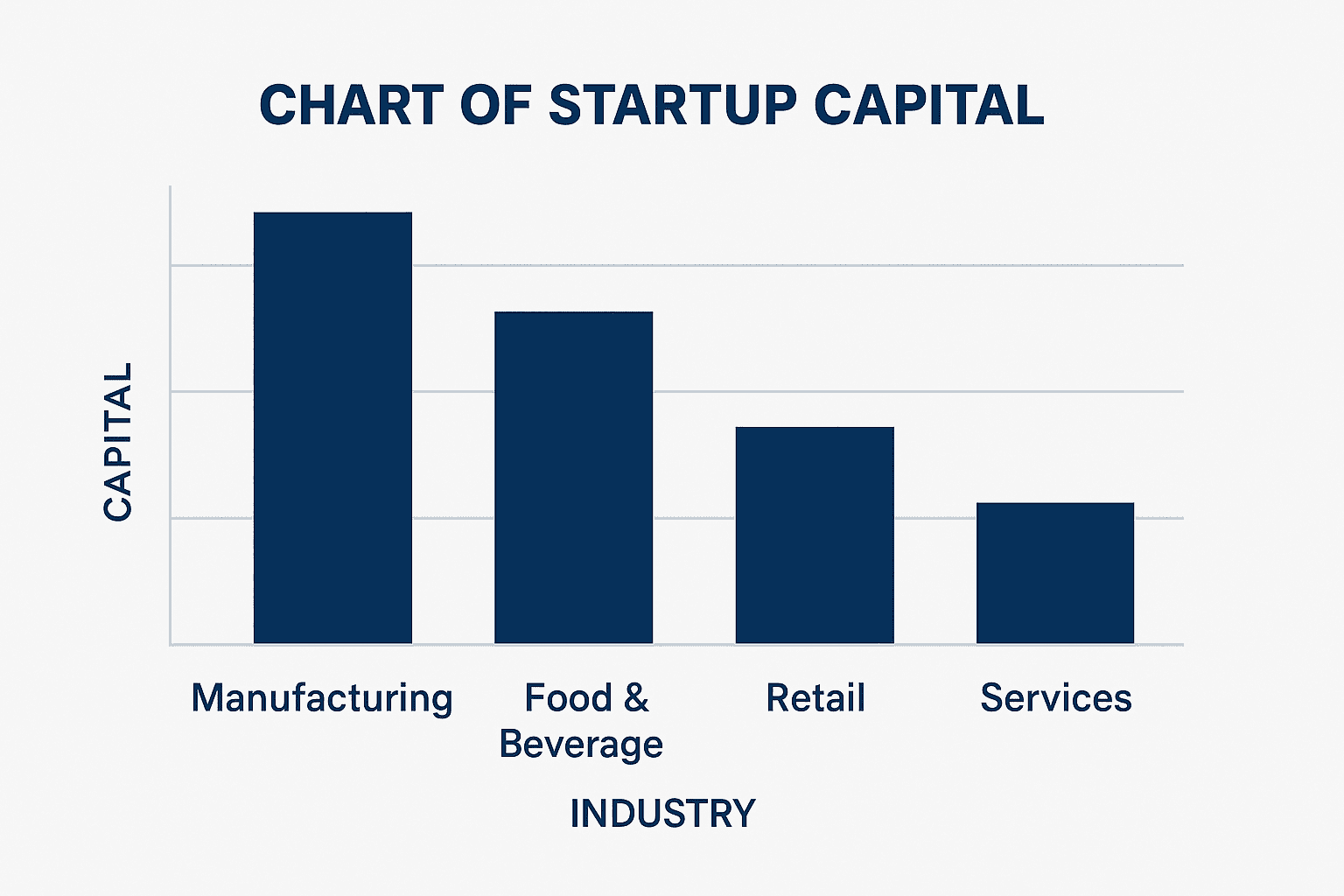
Funding is often the biggest barrier for new businesses. Options include self-funding, loans, investors, grants, or crowdfunding. The right choice depends on your goals, stage, and growth potential.
Bootstrapping (self-funding)
Using your own savings or reinvesting early profits gives you full control and no outside pressure. It shows investors commitment, but growth can be slower without external support.
Crowdfunding
Platforms like Kickstarter or Indiegogo let you raise money directly from the public. It doubles as market validation, but requires strong promotion and clear communication to succeed.
Grants
Government or nonprofit grants provide “free money” that doesn’t need repayment. Competition is high and applications can be time-consuming, but they’re ideal for innovative or socially impactful businesses.
Credit Cards (short-term)
Quick and accessible for covering small expenses, but interest rates are high. Useful as a bridge for early-stage cash flow, though risky if repayment is uncertain.
Bank Loans or Lines of Credit
A traditional route for funding with structured repayment. Banks require strong credit history, collateral, and a solid business plan, but they can provide stable, reliable financing.
Angel Investors
Wealthy individuals invest their own money in exchange for equity. They often bring mentorship and connections, but you give up ownership and must align with their expectations.
Revenue-Based Financing or Startup Competitions
With revenue-based financing, investors are repaid as a percentage of future sales. Startup competitions often provide funding, exposure, and mentorship, though both options require a clear growth strategy.
Final Step – Choosing the Right Fit
First, estimate how much funding you really need. Then match the option to your business model, growth stage, and goals — balancing risk, control, and potential reward.

Registering your business makes it official. Benefits include:
Founder Insight: Andrea Shubert of Strathcona Spirits said:
“We didn’t let the red tape stop us. When we got a ‘no,’ we tried again until we got a ‘yes.’ Step by step, it came together.”
The takeaway: stay persistent.
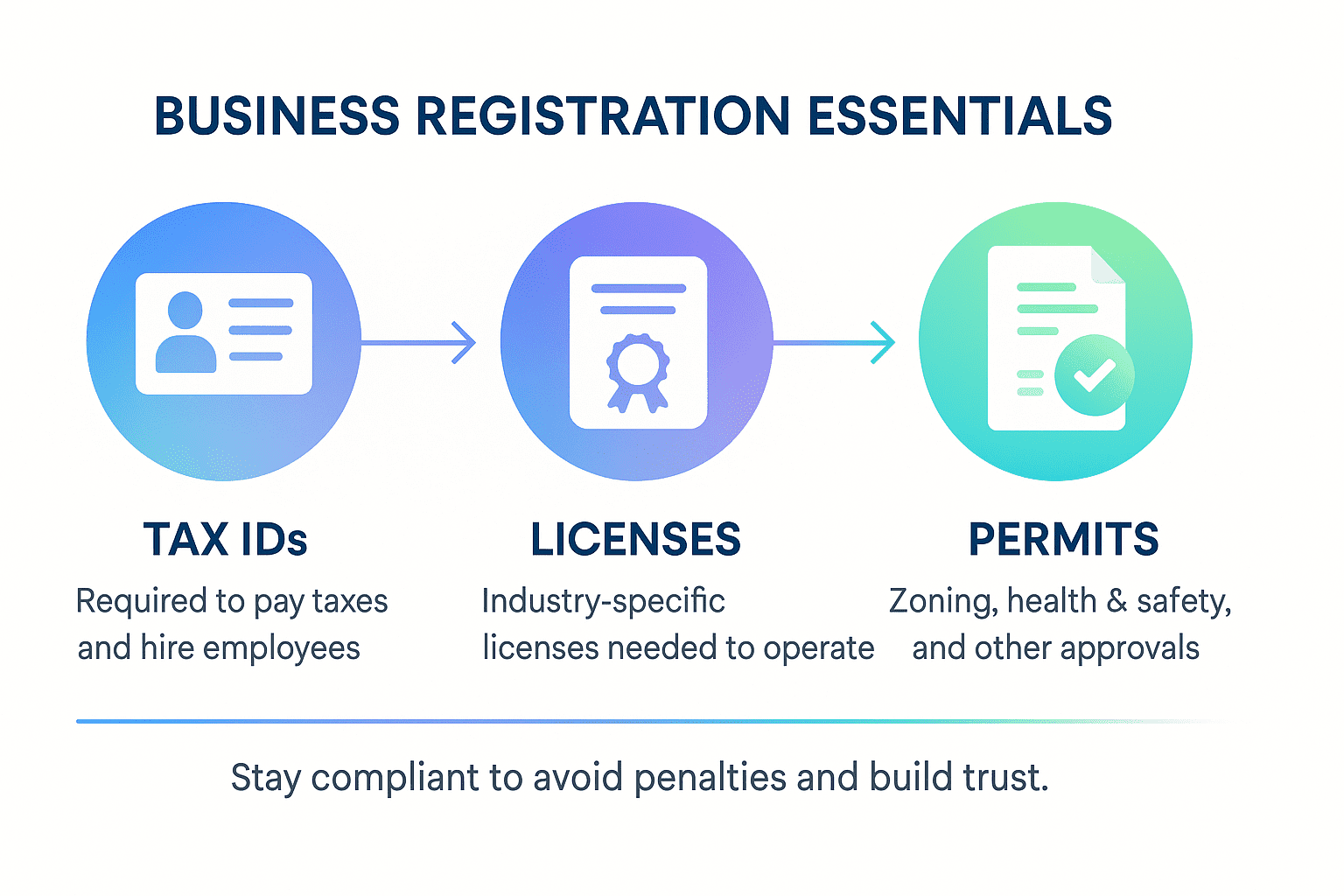
Handle this early to avoid legal trouble later:
Expert Tip:
“Automating tax processes and getting professional advice saves time, stress, and helps you grow safely.” – Sabrina Papini, Avalara
Expanding or starting a business requires navigating different legal systems. Each country has its own process for registering, taxing, and licensing businesses. Here’s a breakdown of the essentials:
United States
United Kingdom
Most countries follow a similar framework: choose a legal structure, register with authorities, apply for a tax ID, and secure industry-specific licenses.
Key Takeaway: No matter where you are, registering your business, securing tax IDs, and obtaining licenses is critical to operating legally, avoiding fines, and scaling safely.

Starting a business is exciting—but it also comes with risks. Insurance acts as a safety net, protecting your venture from accidents, lawsuits, or setbacks that could otherwise end your journey before it begins.
Identifying risks helps you choose the right coverage.
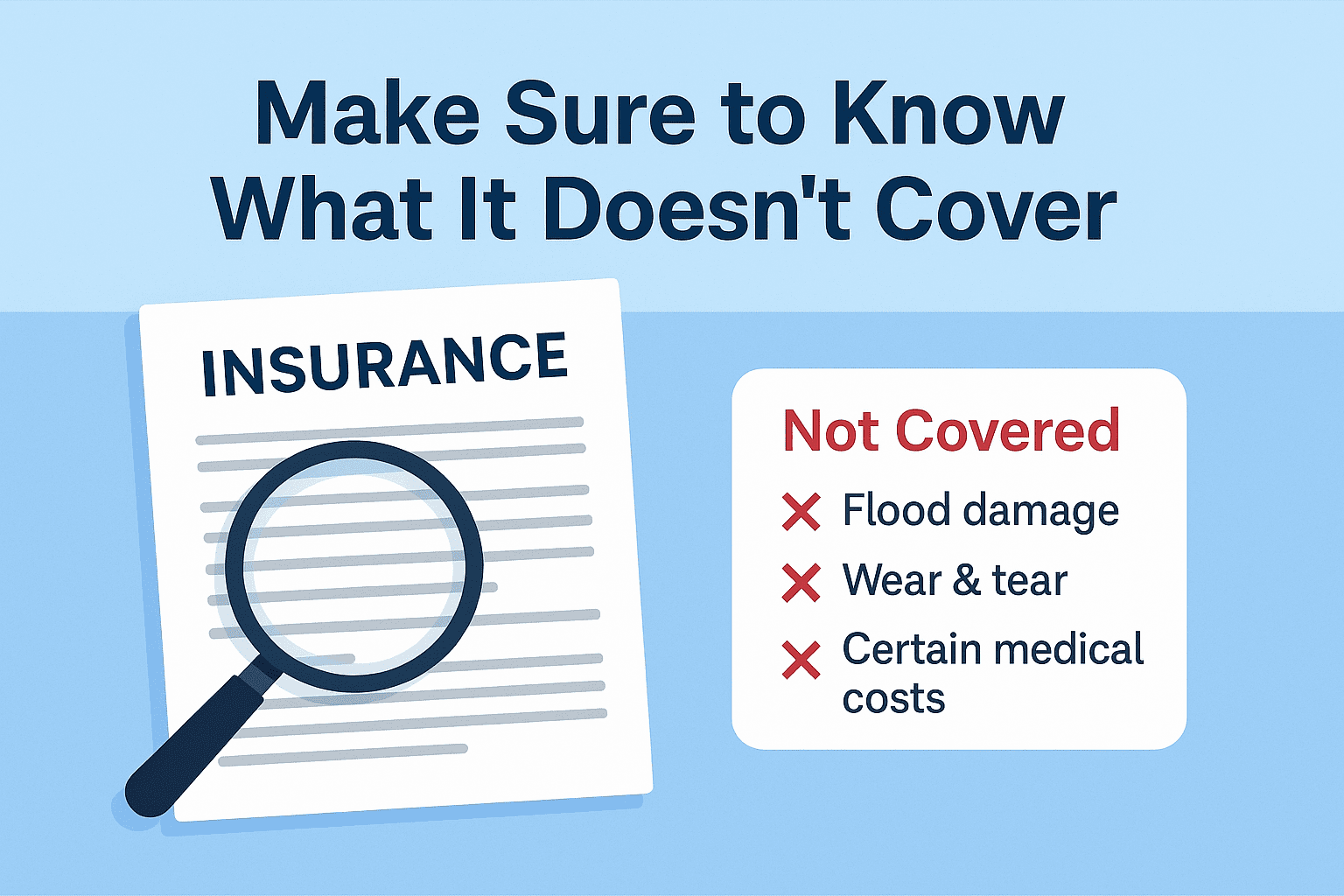
Insurance can be complex. A broker helps you compare policies, balance costs, and avoid gaps in coverage.
Why It Matters: Insurance isn’t just a legal box to tick — it protects the hard work you’ve invested and gives you peace of mind to focus on growth.
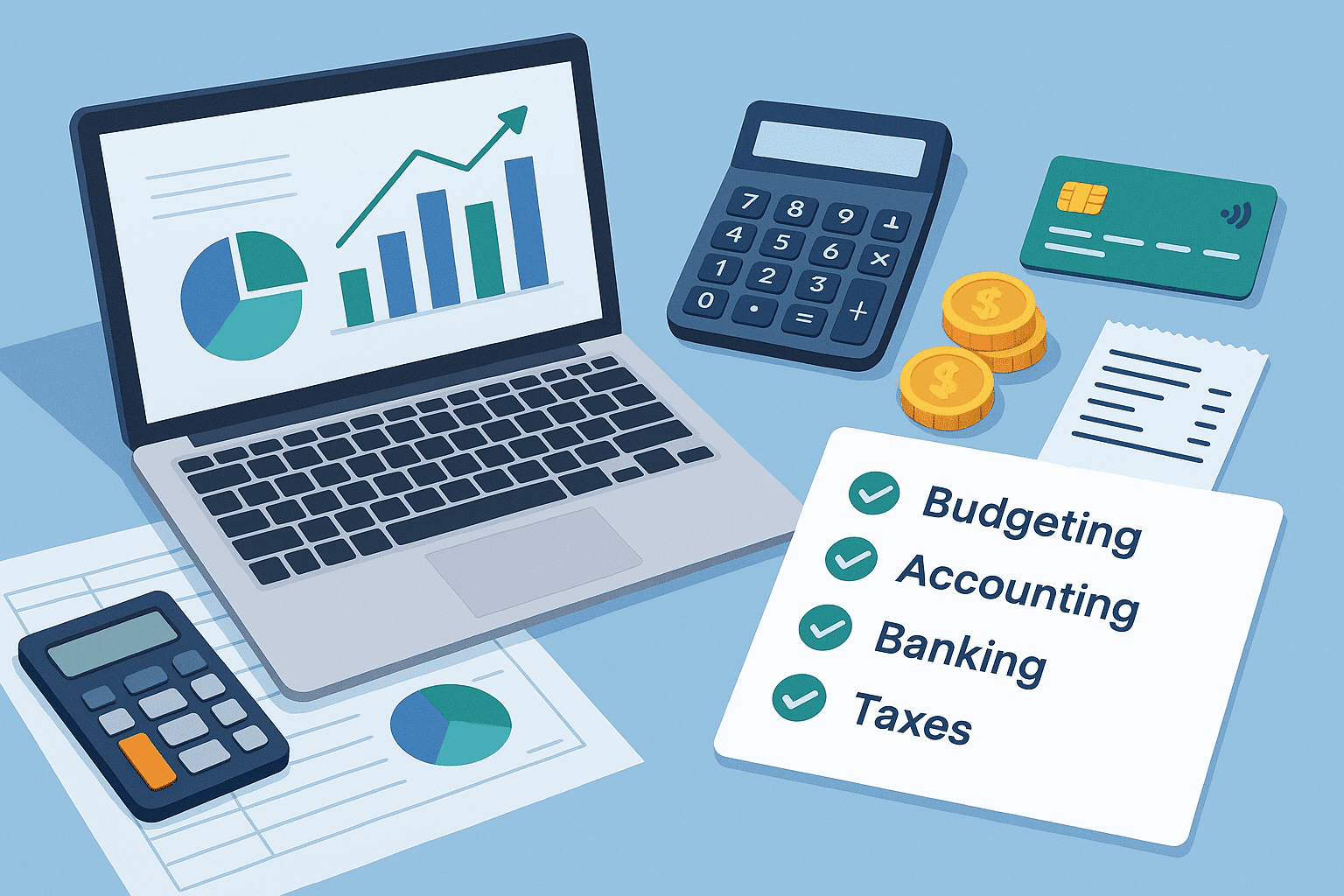
Healthy businesses are built on healthy financial systems. Organizing early keeps stress down and makes scaling easier.
A separate account helps you:
To open one, you’ll usually need:
Ask your bank about fees, limits, integrations with accounting tools, and credit options.
Good bookkeeping is the backbone of growth. It allows you to:
Options:
Pro Tip: Even if you’re solo, set this up early. A strong system keeps your business scalable and stress-free.
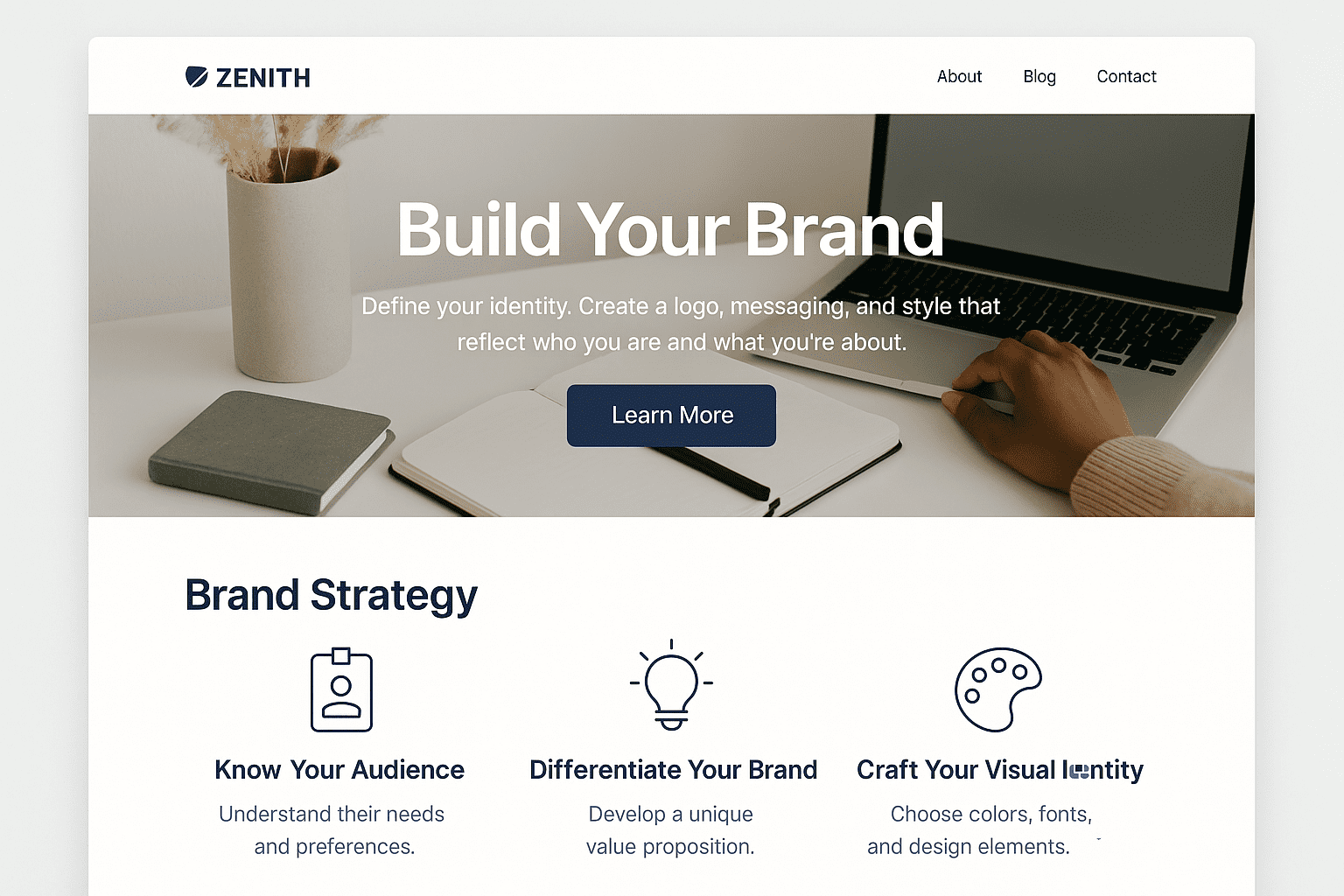
Your brand is more than a logo — it’s your business’s identity and reputation. Done right, it builds recognition, trust, and emotional connection.
A strong brand story makes people feel something about your business. It should include:
A good story turns customers into advocates.

Your voice is the way you communicate. It should be:
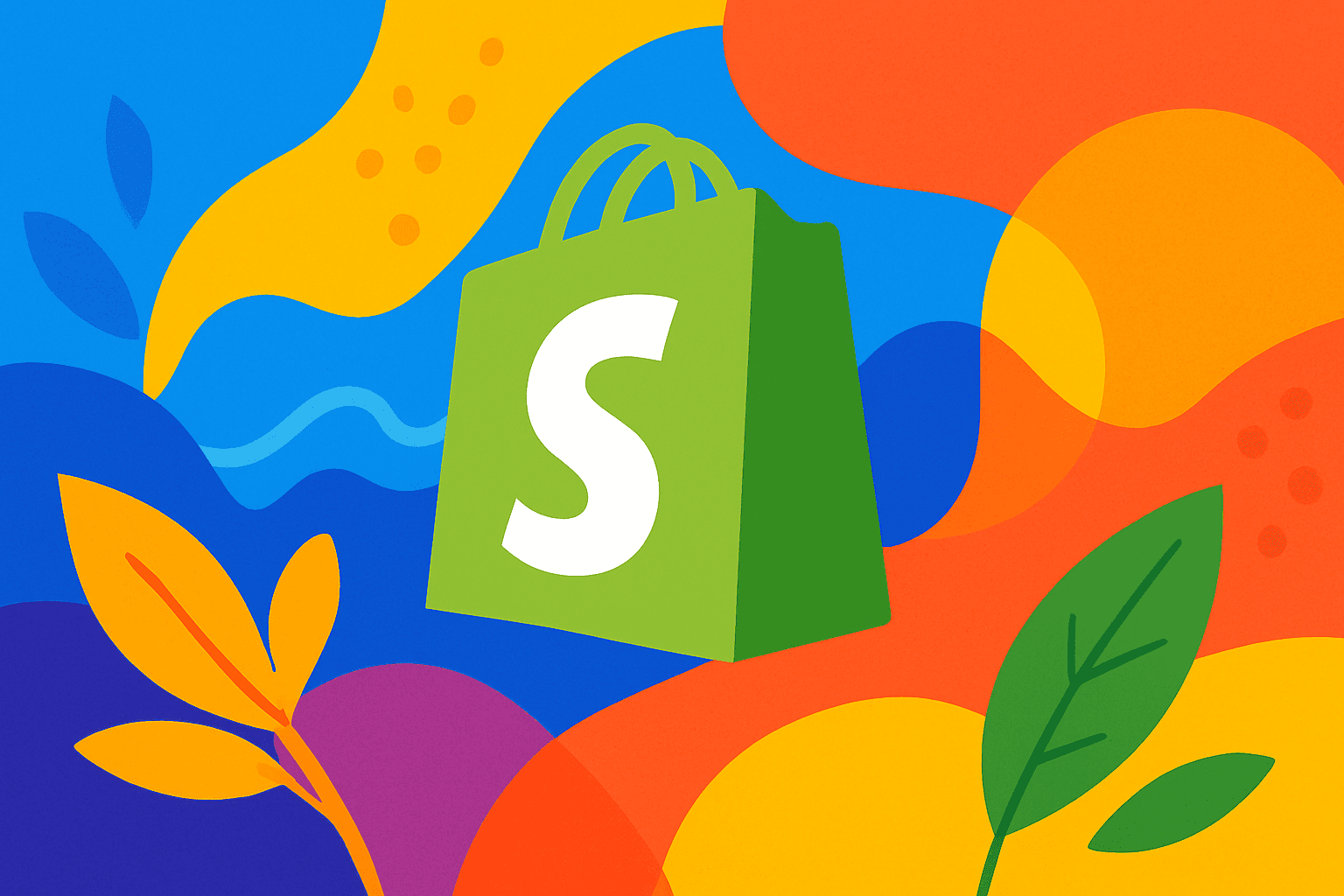
Your website is your digital storefront — often the first impression people have of your brand. It needs to be professional, functional, and trustworthy.
Real Shopify Success Stories:

Why Shopify Stands Out as the Leading E-commerce Platform
Shopify remains a dominant force in the e-commerce world — especially in the U.S., where it captures nearly 30% of the market share, making it the clear leader in the country Globally, Shopify powers a substantial chunk of online stores — with over 4.8 million active stores, accounting for around 10% of the global e-commerce platform market
Several strengths set Shopify apart:
Taken together, these advantages make Shopify not just popular, but a powerful, versatile and future-proof choice for businesses aiming to grow confidently.
With Shopify, you’re not just building a site — you’re building a business foundation.

SEO ensures your website shows up when customers search for products like yours. More in-depth guide for SEO marketing
Search Engine Optimization (SEO) is the process of making your website easier to find and more attractive to both visitors and search engines like Google. Done right, SEO helps you get more traffic, build trust, and grow your business without relying only on paid advertising. It’s not about tricking search engines, but about creating a website that people enjoy using and that search engines can clearly understand.
Technical SEO is about building a strong foundation. A fast, mobile-friendly site keeps visitors engaged and ranks better on Google. Use optimized images, reliable hosting, and simple navigation. Pay attention to Google’s quality checks: speed, responsiveness, and stability.
On-page SEO is about optimizing individual pages. Use keywords in titles, headings, and descriptions — but keep it natural. Add supporting words for context. Schema markup can help Google show extras like reviews or FAQs. Most importantly, answer the questions your audience is asking.
Content is what people come for. Create useful, high-quality guides and articles that stay relevant over time. Longer, in-depth content builds more authority than short posts. Organize related content into clusters and always cite sources, show authorship, and build trust.
Local SEO helps customers nearby find you. Keep your Google Business Profile updated and your name, address, and phone number consistent everywhere. Encourage reviews, earn local backlinks, and create pages for each location or service area.
Off-page SEO builds your reputation beyond your site. High-quality backlinks from trusted websites matter most. Guest articles, collaborations, and media mentions all help. Even unlinked mentions strengthen your brand. Social activity spreads your content, leading to more opportunities.
SEO success means more than traffic — it’s about results. Use Google Search Console to track performance and fix issues. Study how visitors interact with your site, measure conversions like sales or leads, and test different approaches to improve results.
If you serve multiple countries, use signals that show Google which language or region your content targets. Local hosting or CDNs speed up delivery, and adapting content to currency and culture makes it feel natural to each audience.
SEO keeps changing. Optimize for voice search by writing in a natural, question-based style. With AI shaping search results, focus on original insights. Video is critical — YouTube is the second largest search engine. And with zero-click searches, aim for visibility in featured snippets to build authority even without clicks.
Shopify automates much of the technical SEO and integrates with top SEO apps.
SEO isn’t one-and-done — it’s ongoing. Review regularly and refine.
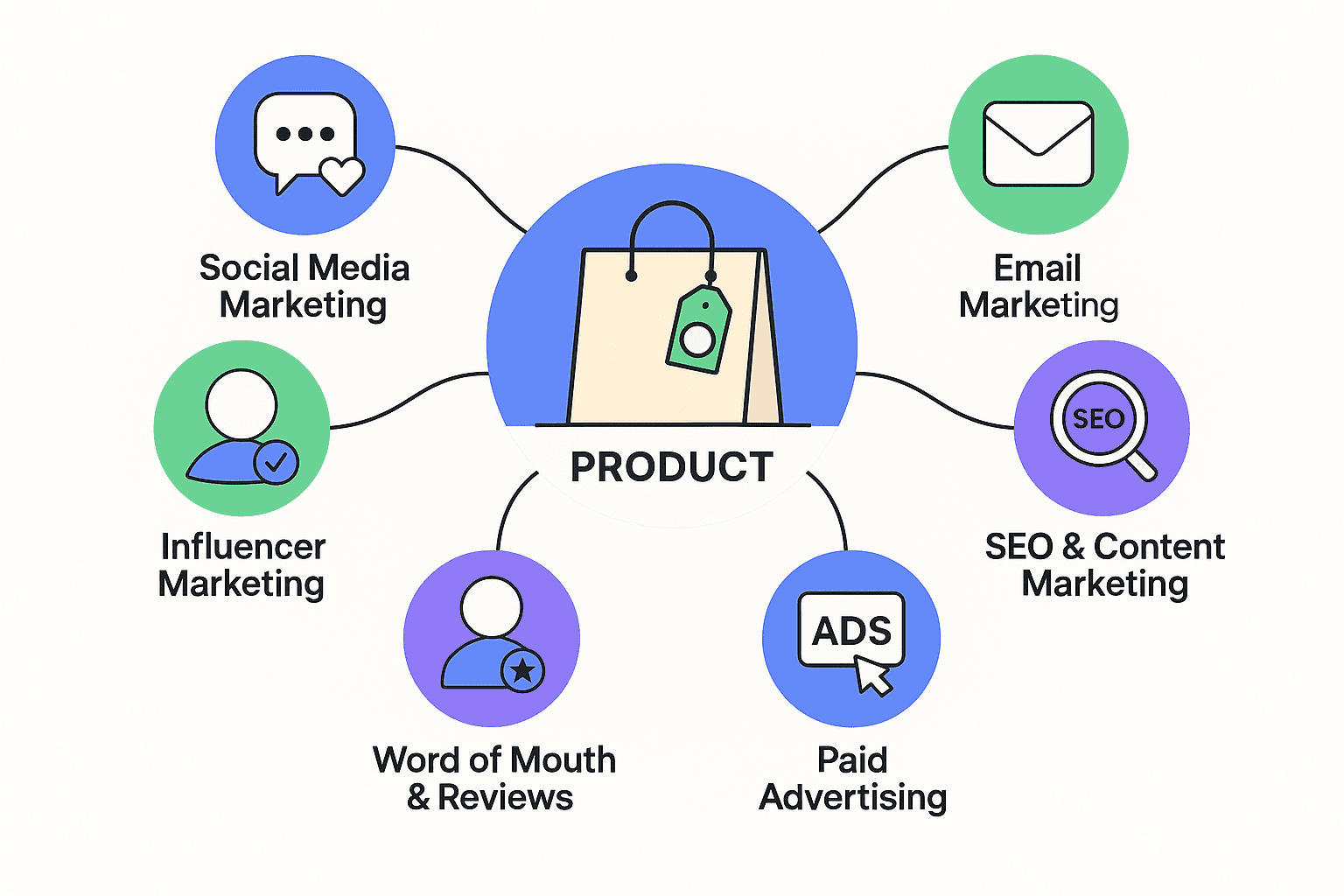
Marketing drives customers to your business and keeps them coming back. with these key strategies:
Google Ads and social media ads bring fast, targeted traffic. Results are measurable, making it easier to see what works and test markets quickly, though it requires ongoing budget.
Social platforms help you connect with your audience where they spend their time. Sharing valuable content builds trust, while paid campaigns expand reach and visibility.
Email is a cost-effective way to nurture relationships and encourage repeat business. With automation, you can send timely, personalized messages that drive better results than generic newsletters.
Blogs, videos, and podcasts establish authority and attract new visitors. Unlike ads, good content continues to generate leads long after it’s published.
Happy customers often become your best promoters. Encouraging reviews, referrals, and testimonials helps turn positive experiences into steady growth.
Automation tools simplify marketing tasks like email, social posts, and analytics. AI helps personalize outreach and uncover insights, allowing you to focus on strategy.
Pro Tip: Test multiple approaches, track results, and double down on what works.
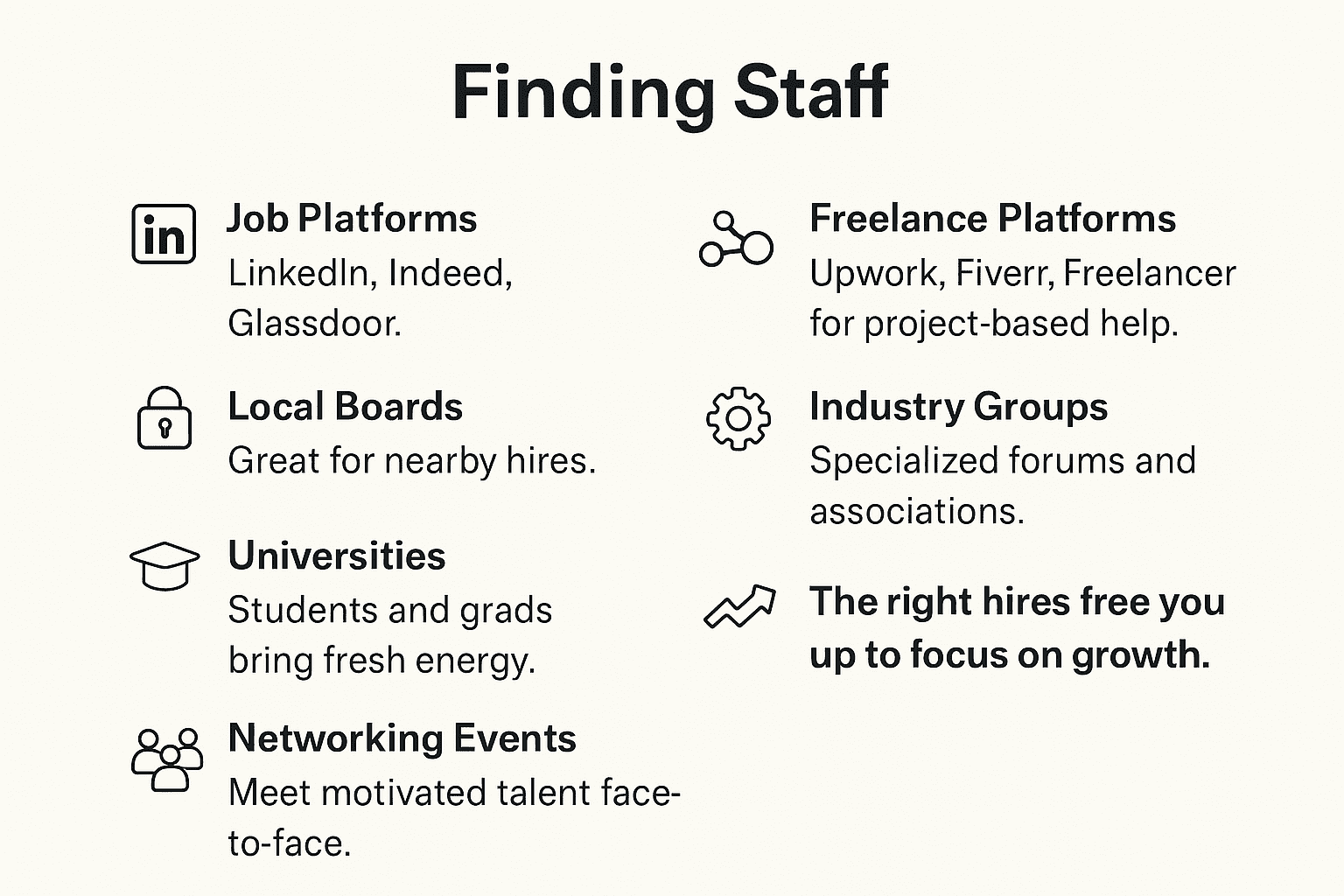
At some point, you can’t do it all. Building a team helps you scale while focusing on strategy.
The right hires free you up to focus on growth.
An online business offers flexibility, low costs, and global reach.
Small Business vs. Enterprise
Neither path is “better” — it depends on your ambition and resources.